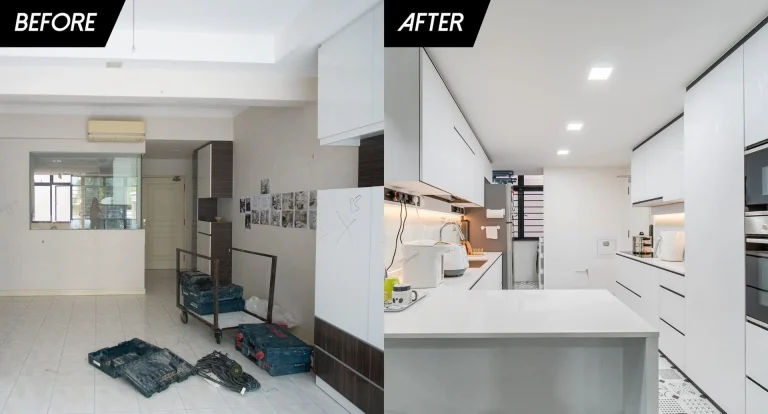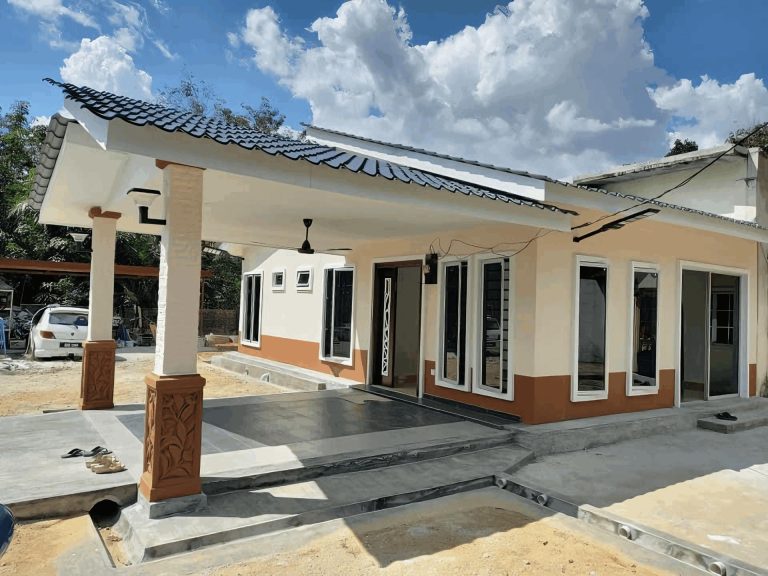Why Mastering Budgeting is the Ultimate Superpower in Construction
When you think about superheroes, you might picture caped crusaders saving the day with flashy powers and jaw-dropping skills. But what if I told you that in the bustling world of construction, there’s a quieter, yet equally powerful superpower lurking in the shadows? That’s right—mastering budgeting could just be the ultimate game changer in the industry! In Malaysia, where construction projects are as common as kopitiams on every corner, having a solid budget is not just a good practice; it’s essential for swinging the success pendulum in your favor. So, whether you’re a seasoned contractor, a new developer, or someone simply curious about the behind-the-scenes of construction projects, buckle up! We’re about to dive into why getting a grip on budgeting can make you a construction superhero, transforming challenges into triumphs and dreams into reality. Let’s explore the superpower that can help you conquer projects big and small, ensuring they not only stay on track but thrive!
The Essential Foundation: Understanding Budgeting in Construction
When it comes to construction, budgeting is not just a spreadsheet filled with numbers; it’s the heart of any project. Understanding the intricacies of budgeting allows you to foresee potential roadblocks and make informed decisions. By mastering your budget, you can ensure that you allocate resources efficiently and accurately, preventing financial spills that can sink a project. Think of it as your roadmap: a well-planned budget guides you smoothly from the groundbreaking ceremony to the finishing touches on a structure.
Here are a few key elements that make up the essence of budgeting in construction:
- Cost Estimation: Knowing the projected costs helps in determining the overall budget.
- Resource Allocation: Identifying where to allocate funds minimizes waste and maximizes productivity.
- Contingency Planning: Setting aside funds for unexpected expenses ensures you’re prepared for surprises.
- Tracking & Reporting: Regular monitoring of expenses allows for adjustments and increases transparency.
To give you a clear picture, here’s a simple breakdown of a hypothetical construction budget:
| Budget Category | Estimated Cost (MYR) |
|---|---|
| Materials | 100,000 |
| Labor | 80,000 |
| Permits & Fees | 15,000 |
| Equipment Rental | 25,000 |
| Contingency (10%) | 22,000 |
By breaking down your budget into these clear categories, you can avoid common pitfalls and ensure your project remains on track. Remember, your budget is not static; it’s dynamic. Adjust it as needed, and keep communication open with your team to address any changes quickly. This foundation in budgeting is essential for achieving success, making every ringgit count and transforming your construction project from mere plans into a reality!

Transformative Impact: How Budgeting Shapes Project Success
In the world of construction, budgeting is more than just tracking expenses—it’s the blueprint for project success. When managed effectively, it becomes a guiding force that influences every aspect of project execution. A well-crafted budget not only helps avoid overspending but sets the stage for making informed decisions throughout the project lifecycle. By prioritizing costs and aligning financial resources with project goals, construction teams can foresee potential challenges and act proactively. This clarity fosters a culture of accountability and encourages collaboration among stakeholders, ensuring everyone is aligned towards a common financial vision.
Effective budgeting also enhances flexibility, allowing project managers to navigate unexpected changes. Here’s how:
- Identifying fluctuating costs: Anticipating variables like material price changes lets teams pivot before issues arise.
- Resource allocation: Allocating funds dynamically means addressing urgent needs without derailing the project.
- Mitigating risks: A solid budget enables the establishment of contingency funds, safeguarding against financial pitfalls.
Moreover, a structured budget helps foster strong relationships with suppliers and subcontractors. When budgets are transparent and well-documented, it builds trust and accountability across the board. Here’s a simple breakdown of how good budgeting can elevate these partnerships:
| Benefit | Impact |
|---|---|
| Clear Communication | Ensures everyone understands their roles and financial limits. |
| Strengthened Negotiation | Empowers teams to negotiate better terms based on financial foresight. |
| Timely Payments | Facilitates on-time payments, enhancing supplier loyalty. |

Navigating Costs: Identifying Hidden Expenses and Managing Risks
In the world of construction, the apparent expenses are often just the tip of the iceberg. Beneath the surface, hidden costs can lurk around every corner, waiting to derail your well-planned budget. From unexpected material price hikes to unforeseen site conditions, these hidden expenses can significantly impact your project’s financial health. It’s essential to conduct a comprehensive risk assessment during the planning phase. This involves:
- Identifying potential risks associated with your project scope
- Evaluating each risk’s likelihood and potential financial impact
- Developing mitigation strategies to deal with identified risks
Maintaining a strict budget is more than just managing known costs; it’s about preparing for the unanticipated. An effective way to ensure you are not caught off guard is to establish a contingency fund. This fund can act as a financial buffer, allowing you to address surprises without seriously affecting the project’s budget. Here’s a simple table to illustrate how setting aside a percentage can aid in managing risks:
| Project Phase | Suggested Contingency (%) |
|---|---|
| Pre-Construction | 5-10% |
| Construction | 10-15% |
| Post-Construction | 3-5% |
By embracing a proactive budgeting approach, you can stay ahead of unforeseen challenges. Regularly revisiting and revising your budget in line with project developments will allow you to keep those hidden costs at bay. Just remember, thorough planning and vigilance are your allies in transforming financial strain into manageable challenges, ultimately enabling your construction project to thrive.

Empowering Decision-Making: Leveraging Budgeting for Strategic Planning
In the world of construction, having a strong grip on budgeting isn’t just about keeping costs in check; it’s about elevating the entire planning process. By aligning your financial strategies with the overarching goals of your projects, you create a framework that not only guides day-to-day operations but also empowers your team to make informed decisions on the fly. When everyone understands the budget, it opens the door to collaboration and innovation, enabling teams to tackle challenges with confidence.
Utilizing budgeting as a strategic tool means you can anticipate risks and allocate resources effectively. Here are some key elements to consider when integrating budgeting into your strategic planning:
- Data-Driven Decisions: Use past budget performance to forecast future costs accurately.
- Flexibility: Maintain a buffer in your budget to accommodate unforeseen changes without derailing the project.
- Clear Communication: Share budget insights with stakeholders to ensure everyone is on the same page.
Moreover, when you harness the power of budgeting, you transform your projects into models of efficiency. Consider implementing a simple tracking table to visualize your progress:
| Project Phase | Budget Allocated (RM) | Budget Spent (RM) | Variance (RM) |
|---|---|---|---|
| Pre-Construction | 50,000 | 35,000 | 15,000 |
| Construction | 300,000 | 250,000 | 50,000 |
| Post-Construction | 20,000 | 10,000 | 10,000 |
This simple overview provides immediate clarity on where your finances stand, helping you to make quick adjustments and maintain control. By making budgeting a core part of your strategic plan, you redefine your project goals, empower your team, and master the art of construction management.

Engaging Stakeholders: Communicating the Budget Effectively
Budgeting in construction isn’t just about crunching numbers; it’s a means to foster relationships and ensure all parties are aligned. Engaging stakeholders effectively requires a mix of clear communication and actionable insights. Start by outlining your budget with visual aids, such as charts and graphs, to help stakeholders see where the money flows and how resources are allocated. Tailoring your budget presentations to highlight specific points of interest for different stakeholders can make a huge difference in their understanding and engagement.
Another key strategy is to create regular updates and maintain an open channel for feedback. Don’t just present the numbers; say what they mean! Use plain language to break down complex financial terms. This can include creating infographics that summarize cost breakdowns, timelines, and potential risks involved. You might even consider scheduling intermittent briefings rather than one-off meetings, allowing for ongoing conversations that keep everyone in the loop. This helps build trust and reinforces the notion that budgeting is a collaborative effort.
| Stakeholder Group | Concerns | Key Data Points |
|---|---|---|
| Investors | Return on Investment | Projected Revenue |
| Contractors | Resource Allocation | Labor & Material Costs |
| Clients | Project Timeline | Milestones & Deliverables |
Utilizing a collaborative software tool that allows stakeholders to view real-time budget updates can enhance transparency and facilitate engagement. Having access to these details lets stakeholders feel like they’re part of the process, which can lead to a greater commitment toward project success. Remember, the more informed your stakeholders are, the more confident they will be in their decisions, leading to a smoother project flow and happier outcomes.

Tools of the Trade: Utilizing Technology for Efficient Budget Management
When it comes to keeping your budget in check, technology is your best buddy. With the right tools, you can transform the way you handle finances and make it a breeze. Here are some tools that could really up your budgeting game:
- Project Management Software: Programs like Asana or Trello allow you to keep track of tasks, timelines, and budgets all in one place, streamlining your workflow.
- Construction Estimating Tools: Utilize tools like Bluebeam or PlanSwift to make accurate estimates that help avoid budget blowouts.
- Budget Tracking Apps: Mobile apps such as Expensify or QuickBooks enable you to track expenses in real-time and manage cash flow effectively.
Creating a budget is just the first step; monitoring it closely as the project unfolds is crucial. Making use of cloud-based spreadsheets like Google Sheets allows for easy updates and collaboration among team members. Plus, you can set alerts for key financial milestones or when you approach budget limits. Check out this simple table comparing tracking methods:
| Tracking Method | Pros | Cons |
|---|---|---|
| Spreadsheets | Flexible, customizable, easy to share | Can be prone to human error |
| Dedicated Software | Specific features for construction, automated calculations | Higher upfront costs and learning curve |
| Mobile Apps | Access on-the-go, real-time updates | Lack of comprehensive features compared to software |
No matter which tech tools you choose, the ultimate goal is to have a clear and accurate picture of your finances throughout the construction process. Frequent reviews and updates will help you stay agile, allowing you to pivot quickly if costs start to escalate or unexpected expenses arise. Always remember, in the world of construction, staying on top of your budget isn’t just about crunching numbers—it’s about ensuring that your projects run smoothly and successfully.

Continuous Improvement: Adapting Budgets in Real Time for Better Outcomes
In the dynamic world of construction, maintaining a solid grasp on budgeting isn’t just beneficial; it’s vital for keeping projects on track. The ability to adapt budgets in real-time empowers project managers and teams to react swiftly to changes in scope, material costs, and labor availability. Embracing a flexible budgeting approach allows for immediate adjustments, ensuring financial resources are allocated efficiently as the project unfolds. This adaptability leads to a more seamless workflow and minimizes financial waste.
Implementing technology can significantly enhance this real-time adaptability. With advanced project management tools and software, teams can easily track expenses and forecast financial needs throughout the project lifecycle. By utilizing these tools, you can:
- Monitor expenses daily: Get instant alerts on budget deviations.
- Adjust forecasts: Modify projections based on current data.
- Collaborate effectively: Enable all team members to access and update financial info in real-time.
To visualize the impact of effective budgeting adjustments, consider the following table showcasing the difference in project outcomes based on budget adaptability:
| Project Attribute | Fixed Budget Approach | Flexible Budget Approach |
|---|---|---|
| Cost Overruns | 20% | 5% |
| Project Delay | 30 Days | 10 Days |
| Resource Utilization | Low | High |
By prioritizing continuous improvement and budget adaptability, teams can not only handle unexpected challenges but also seize new opportunities. The agility gained through this approach fosters a culture of accountability and innovation, leading to better outcomes and more successful projects overall. In a field where conditions can change at a moment’s notice, mastering the art of real-time budget adjustment is indeed a superpower.

Building a Culture of Accountability: Fostering Collaboration Through Budget Mastery
In the fast-paced world of construction, understanding budgets is like having a treasure map. When everyone on the team knows how to read it, collaboration flourishes, and projects run smoother. Mastering budgeting is not just about numbers; it’s about creating a culture where communication and teamwork thrive. By sharing budget insights across different roles—be it project managers, engineers, or on-site workers—everyone becomes a stakeholder in the project’s success. This collective ownership encourages a deeper commitment to quality and efficiency.
When teams embrace budget mastery, accountability naturally follows. Each member understands the impact their decisions have on the overall finances, which leads to a greater sense of responsibility. Instead of operating in silos, team members begin to share best practices and insights:
- Regular budget reviews: Schedule meetings to discuss financial updates and challenges.
- Transparent reporting: Keep budget performance visible for all to see and learn from.
- Celebrating milestones: Acknowledge when budgets are met, reinforcing positive behaviors.
Ultimately, when collaboration is grounded in budget literacy, the entire construction workflow benefits. Projects are completed not only on time but within budget, leading to increased client satisfaction and repeat business. Consider implementing a simple tracking system to monitor spending versus projections, allowing for real-time adjustments. Here’s a quick look at how you can structure a basic budget tracking table:
| Budget Item | Estimated Cost | Actual Cost | Status |
|---|---|---|---|
| Materials | RM 50,000 | RM 48,000 | On Track |
| Labour | RM 30,000 | RM 32,000 | Over Budget |
| Equipment | RM 10,000 | RM 9,000 | Under Budget |
To Conclude
And there you have it, folks! Mastering budgeting isn’t just another skill; it’s like having a superpower in the construction world. Whether you’re managing a small renovation or overseeing a massive project, the ability to keep your finances on track can make all the difference. It empowers you to make smarter decisions, your team feels more secure, and your projects come together more smoothly.
So, if you want to stay ahead in the game, start treating budgeting like your secret weapon. It doesn’t have to be complicated—just a little planning and discipline can go a long way. Before you know it, you’ll be navigating the construction landscape with confidence, transforming challenges into opportunities.
Just remember: every ringgit counts. Happy building!








